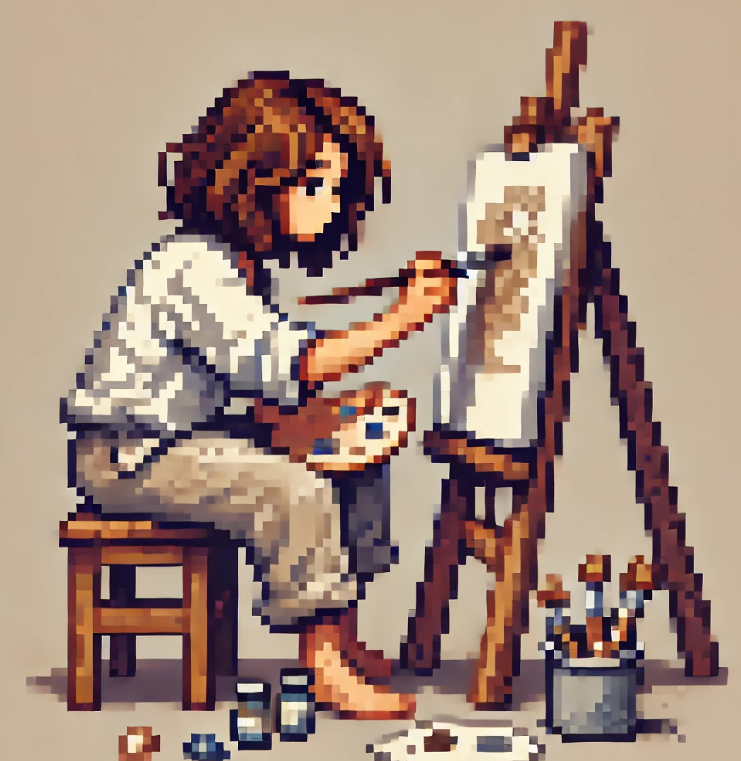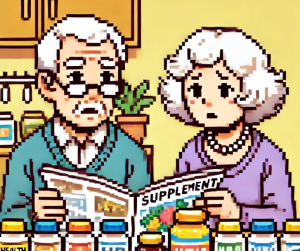
Crafting Happiness: How Art and Creativity Boost Wellbeing
Have you ever felt a surge of joy after finishing a DIY project or a sense of calm while knitting a scarf? You’re not alone. Engaging in creative arts and crafts (CAC) activities like painting, knitting, or even pottery is more than just a hobby—it’s a powerful tool for boosting happiness and life satisfaction. A recent study out of the UK sheds light on how these activities can significantly enhance your sense of wellbeing and, surprisingly, may even exceed the benefits of living in a wealthier neighborhood or having a stable job.
The Healing Power of Creativity
In a world where mental health services are increasingly stretched thin, the simple act of creating something with your hands might be the key to improving public health on a broad scale. The study, which analyzed data from over 7,000 adults across England, found that people who engaged in arts and crafts were more likely to report higher levels of happiness, life satisfaction, and a sense of purpose. These benefits were seen even after accounting for other factors known to influence wellbeing, such as age, gender, income, and employment status.
This isn’t just about feeling good in the moment—higher levels of subjective wellbeing (SWB) have been linked to better physical health, longer life expectancy, and a lower risk of mental health issues like depression and anxiety. The findings suggest that public health practitioners and policymakers should consider supporting CAC as a cost-effective way to improve population health.
Crafting as a Public Health Strategy
Why should public health professionals care about something as seemingly simple as knitting or drawing? Because the study shows that engaging in these activities can be a significant predictor of wellbeing, even when compared to factors like economic status and employment. In other words, a person’s participation in creative activities can be as important to their mental health as their income or job security.
For public health practitioners, this opens up a new avenue for promoting mental wellness that is accessible, affordable, and scalable. Unlike expensive therapies or medications, CAC activities can be enjoyed by people of all ages and backgrounds. They don’t require a prescription, just a bit of time, and some basic materials. And the best part? The study found that even a small amount of engagement in CAC can lead to noticeable improvements in how people feel about their lives.
What the Numbers Say
The researchers used hierarchical linear regression to explore how CAC impacts various aspects of wellbeing, including life satisfaction, happiness, and the sense that life is worthwhile. The results were compelling:
- Life Satisfaction: Engaging in arts and crafts significantly predicted higher life satisfaction scores, even more than the benefits of living in a less deprived area.
- Sense of Purpose: People who participated in CAC reported a stronger sense that their lives were meaningful, with the effect being greater than that of simply having a job.
- Happiness: Those who took part in creative activities were happier, with an increase in happiness comparable to the effect of aging 20 years.
These findings highlight the potential of CAC as a simple yet effective way to enhance the quality of life. For public health experts, this means CAC could be a valuable addition to community wellness programs, particularly in areas where traditional mental health resources are lacking.
Why CAC Matters More Than Ever
In the wake of the COVID-19 pandemic, the demand for mental health services has skyrocketed, but resources have not kept pace. This has left many people struggling with feelings of loneliness and anxiety. The study’s findings suggest that engaging in CAC could be a vital tool for addressing these issues, offering a form of self-care that is both accessible and effective.
But it’s not just about individual benefits. On a larger scale, promoting CAC could help reduce the burden on mental health services by providing an alternative way for people to manage stress, anxiety, and other mental health challenges. This is particularly important in underserved communities where access to mental health services may be limited.
Moreover, CAC activities are inherently flexible. They can be tailored to different age groups, cultural backgrounds, and personal preferences, making them an inclusive option for promoting wellbeing across diverse populations.
A New Perspective on Loneliness and Anxiety
Interestingly, the study found that while CAC positively impacted life satisfaction and happiness, it didn’t have a significant effect on reducing loneliness or anxiety. This might seem surprising at first, but it makes sense when you consider that many CAC activities are solitary. While these activities can boost your mood and sense of purpose, they might not provide the social connections needed to alleviate loneliness.
This doesn’t diminish the value of CAC—it simply points to the need for a more holistic approach to mental health. Combining CAC with activities that foster social interaction, such as group crafting sessions or community art projects, could be a powerful way to tackle both loneliness and low wellbeing.
The Takeaway for Public Health
For public health professionals and policymakers, the message is clear: supporting and promoting CAC can have a real impact on community wellbeing. By making these activities more accessible through community programs, workshops, and public spaces, we can help more people experience the benefits of creativity.
And for individuals, the takeaway is just as simple: if you’re looking to boost your mood or find more satisfaction in life, try picking up a paintbrush or some knitting needles. The science suggests that these small acts of creativity can lead to big improvements in how you feel.
Join the Conversation
Have you noticed a difference in your mood or overall happiness after engaging in arts and crafts? What creative activities do you enjoy, and how do they impact your sense of wellbeing? Share your experiences in the comments below or on social media—we’d love to hear your thoughts!
Be Part of the Change – Get Weekly Updates!
Stay informed and connected. Subscribe for free and share this blog to make a difference in public health with others. If you liked this blog, please share it! Your referrals help This Week in Public Health reach new readers.



